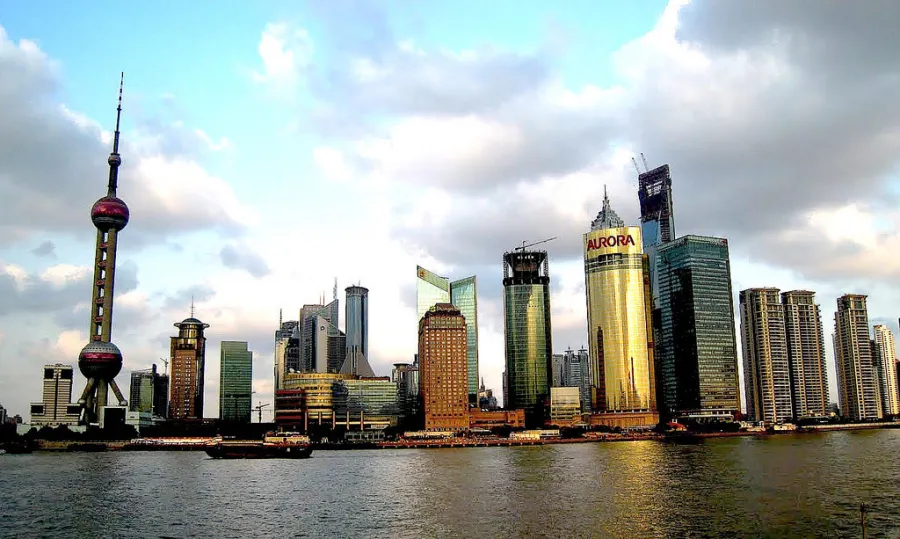
Property investments in Guangzhou and Shenzhen rose to $61.91b in 2018
Guangzhou accounted for 60% of transactions of over $113.39m.
Real estate investment into Guangzhou and Shenzhen hit a record high of $61.91b (RMB54.6b) in 2018 thanks to the Guangdong-Hong Kong-Macao Greater Bay Area (GBA) initiative, according to a report by Cushman & Wakefield.
Investor interest narrowly focused on Guangzhou and Shenzhen given the maturity of their economies, close proximity to Hong Kong, and the presence of high-quality commercial assets, the report explained.
As the investment market in the GBA has heated up, it has also attracted a growing number of foreign investors. According to Reed Hatcher, director and head of research for Hong Kong at Cushman & Wakefield, the strong investment demand from foreign investors seen in 2018 continued into Q1 2019 with the combined foreign consideration in Guangzhou and Shenzhen amounting to $8.5b (RMB7.5b), which is about a little over half of the record high in 2012.
“Of the 23 foreign transactions of over $113.39m (RMB100m) each in Guangzhou and Shenzhen between 2009 and 2014, 83% were in Guangzhou. Even as foreign investors have gradually expanded into Shenzhen since 2015, Guangzhou has remained the focus with the city’s share of transactions remaining above 60% in 2017 and 2018,” he highlighted.

Nearly two years after the initial announcement of an ambitious plan to transform the GBA, consisting of nine Guangdong province cities and two special administrative regions (Hong Kong and Macao) into a global economic powerhouse, the central government followed through by formally releasing a blueprint for the region in February 2019.
Underpinning the plan were two key elements. The first is an array of transportation infrastructure, much of which is currently under construction, designed to link the region together and create a one-hour travel circle. The other is industry transformation, particularly within the Tier-2 and Tier-3 cities in the area, that aims to move them up the value chain.
“The GBA initiative aims to boost the growth of the service sector in the non-core cities by supporting an ongoing shift away from manufacturing to an economy driven by technology innovation and services. There is significant room to expand services growth as amongst the seven GBA cities designated as ‘non-core’ (Hong Kong, Macao, Shenzhen and Guangzhou are designed as the four “core” GBA cities), Dongguan is the only city in which the service sector accounts for more than half of its gross domestic product (GDP),” the report’s authors noted.

Although real estate is not a key feature of the GBA plan, its successful implementation has had major implications for the sector, from the creation of commercial nodes supported by new transportation links to growing commercial demand supported by new industries and rising incomes. The report noted that foreign real estate investment more than doubled to $5.9b (RMB5.2b) in 2018, from $2.49b (RMB2.2b) in 2014.
Amongst all asset classes, office and retail properties were the two most sought after by foreign investors, accounting for 40% and 25%, respectively, of the total number of foreign transactions over the past 10 years.
The appetite for existing office assets has been supported by strong underlying fundamentals. Cushman & Wakefield noted. Driven by upgrading and expansion demand for Grade A office space by local corporates, especially those in the technology sector, net absorption in Shenzhen’s office market grew to 767,500 sqm and 455,700 sqm in 2017 and 2018 respectively, which were well above the 10-year historical average of 263,200 sqm.
Similarly, robust expansion requirements from technology, media and telecommunications (TMT) tenants and co-working operators have helped push down the vacancy rate in Guangzhou’s Grade A office market to 4.1 % as of Q1 2019, its lowest level in a decade.
“The tight vacancy environment supported the average monthly rental of the city growing at the fastest pace (3.2% YoY) amongst all China Tier-1 cities to $220.73 (RMB194.6) psm in Q1 2019,” the report’s authors highlighted.
Meanwhile, investment demand for retail properties, specifically those with value-added potential for repositioning or upgrading, is also on the rise as they provide an opportunity for investors, especially institutional funds, to secure attractive returns by utilising their asset management expertise to transform an underperforming asset.
In a recent example of such an acquisition, Warburg Pincus-backed KaiLong purchased Neo Metropolis Plaza in Yuexiu Area in Guangzhou for $1.36b (RMB 1.2b) or approximately $27,223.2 (RMB24,000) psm from Yuexiu REIT. It is reported that KaiLong intends to target a co-working operator to lease the building upon completion of asset enhancement.
Alvin Yip, Cushman & Wakefield’s president of capital markets for Greater China and head of capital markets for China, expects to see more foreign private equity and real estate (PERE) funds to enter the investment markets of Guangzhou and Shenzhen given their strong economic fundamentals and proximity to Hong Kong.
“Competition is likely to intensify as both foreign and domestic players are scrambling for investment opportunities especially within the commercial asset classes,” he highlighted.



![SBR 5 Lorem Ipsum News 2 [8 May]](https://cmg-qa.s3.ap-southeast-1.amazonaws.com/s3fs-public/styles/exclusive_featured_article/public/2025-05/a_hand_pointing_to_a_futuristic_technology_5b87c9d0e3_3.png.webp?itok=M3Hf-9XR)
![SBR 4 Lorem Ipsum [8 May Top Stories]](https://cmg-qa.s3.ap-southeast-1.amazonaws.com/s3fs-public/styles/exclusive_featured_article/public/2025-05/a_hand_pointing_to_a_futuristic_technology_5b87c9d0e3_2.png.webp?itok=2m5Wl0MX)


![Exclusive three SBR 12 Lorem Ipsum [8 May]](https://cmg-qa.s3.ap-southeast-1.amazonaws.com/s3fs-public/styles/exclusive_featured_article/public/2025-05/a_hand_pointing_to_a_futuristic_technology_5b87c9d0e3_11.png.webp?itok=8kn_UIfA)
![SBR 3 Lorem Ipsum [ Exclusive 2]](https://cmg-qa.s3.ap-southeast-1.amazonaws.com/s3fs-public/styles/exclusive_featured_article/public/2025-05/a_hand_pointing_to_a_futuristic_technology_5b87c9d0e3_1.png.webp?itok=YCyjLegJ)
![SBR 2 Lorem Ipsum [8 May]](https://cmg-qa.s3.ap-southeast-1.amazonaws.com/s3fs-public/styles/exclusive_featured_article/public/2025-05/a_hand_pointing_to_a_futuristic_technology_5b87c9d0e3_0.png.webp?itok=_cKD-29o)

![Video [Event News]](https://cmg-qa.s3.ap-southeast-1.amazonaws.com/s3fs-public/styles/event_news_featured_article/public/2025-05/screenshot-2025-05-08-at-4.58.53-pm_0.png.webp?itok=Kud35sMs)
![Event News SBR 9 Lorem Ipsum [8 may]](https://cmg-qa.s3.ap-southeast-1.amazonaws.com/s3fs-public/styles/event_news_thumbnail/public/2025-05/a_hand_pointing_to_a_futuristic_technology_5b87c9d0e3_8.png.webp?itok=DTh_dbYp)
![Event News SBR 9 Lorem Ipsum [8 May]](https://cmg-qa.s3.ap-southeast-1.amazonaws.com/s3fs-public/styles/event_news_thumbnail/public/2025-05/a_hand_pointing_to_a_futuristic_technology_5b87c9d0e3_7.png.webp?itok=vzDAzb6V)
![Event News SBR 8 Lorem Ipsum [8 May]](https://cmg-qa.s3.ap-southeast-1.amazonaws.com/s3fs-public/styles/event_news_thumbnail/public/2025-05/a_hand_pointing_to_a_futuristic_technology_5b87c9d0e3_6.png.webp?itok=jvHFc4P6)
![Video [Event News]](https://cmg-qa.s3.ap-southeast-1.amazonaws.com/s3fs-public/styles/video_thumbnail/public/2025-05/screenshot-2025-05-08-at-4.58.53-pm_0.png.webp?itok=yZnI0YBb)
![Video 1 SBR [8 May]](https://cmg-qa.s3.ap-southeast-1.amazonaws.com/s3fs-public/styles/video_thumbnail/public/2025-05/screenshot-2025-05-08-at-4.58.53-pm.png.webp?itok=9AAeRz_k)

 Advertise
Advertise

